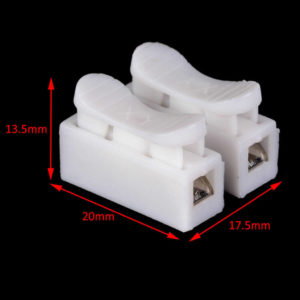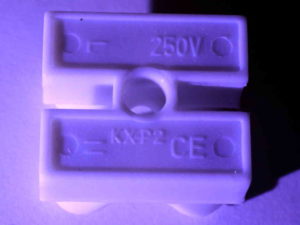I purchased some CH2 terminal blocks on eBay. They were advertised as 250V AC, 10A, to suit 2.5mm^2 conductors.
Above is the seller’s pic of the terminal block.
Features:
– Fast wiring
– Prevents the wire from shorting out
– Free drilling screws, increase the speed of assembly
– Can completely replace electrical tape
– Cost savings
– Fast、efficient and safe
– Widely used in the wire connection,especially for LED Lighting Ceiling
– lamp dedicated wiring clip.Specification
– Material: PP Flame Retardant Plastic
– Reed material: Manganese Steel Sheet
– Color: White
– Voltage: 220V
– Current: 10A
– Type: 2Pin Connector
– Style:Self-locking Cable Connector
– Temperature: -40 to 150 Degrees Celsius
– Wiring: Wiring Capacity From 0.5-2.5 Square Wire
– Size: CH-2:Approx. 20*17.5*13.5mm
Close inspection cause me concern for their performance, there is no current rating marked. The product is labelled KX-P2 and appears to be a product of Foshan Shunde Kaixiang Electrical Co Ltd, but the Chinese being great copyists, this may have come from another source. Continue reading Chinese CH2 terminal block (CH1 CH3)











